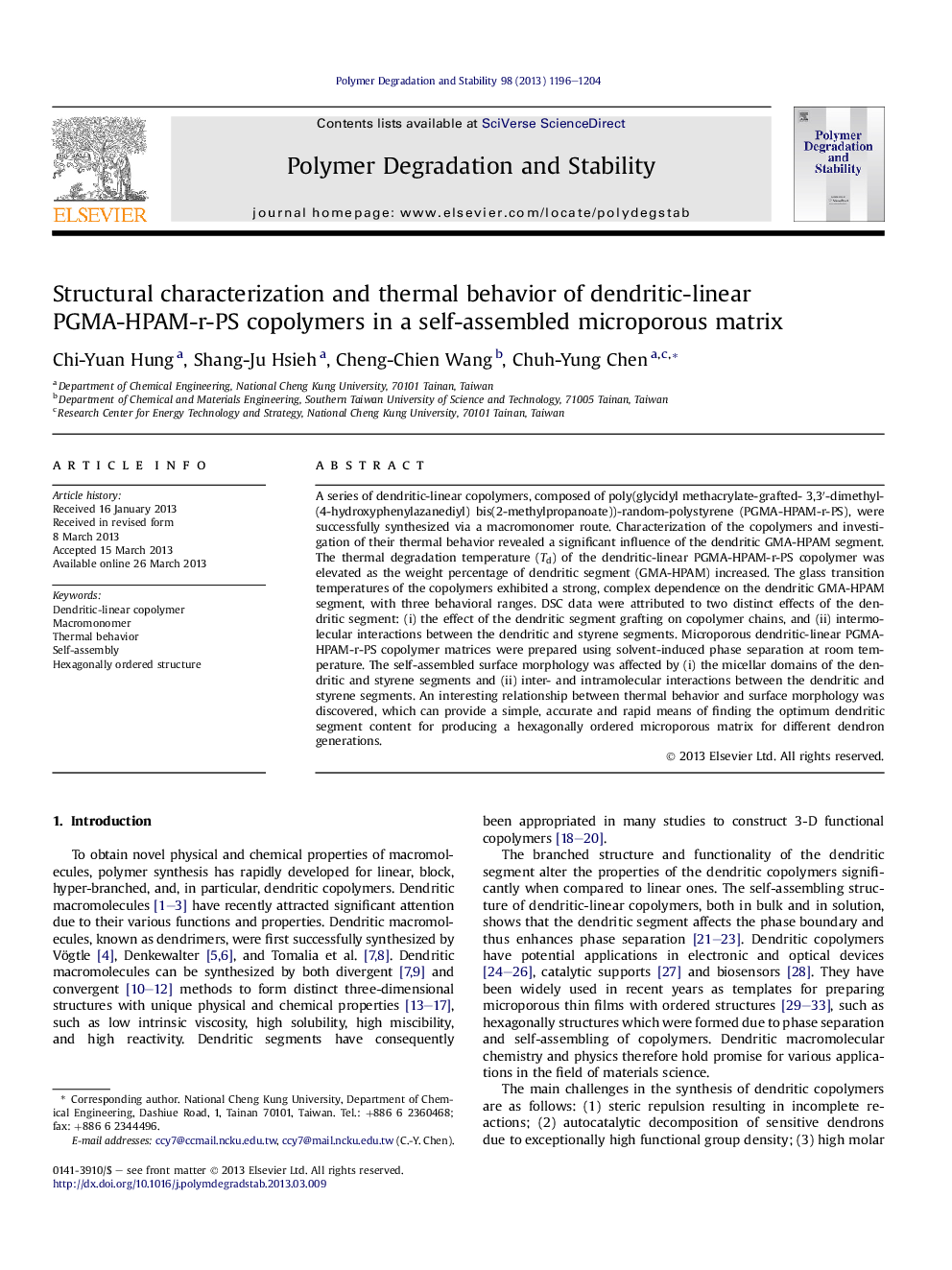| Article ID | Journal | Published Year | Pages | File Type |
|---|---|---|---|---|
| 5202134 | Polymer Degradation and Stability | 2013 | 9 Pages |
A series of dendritic-linear copolymers, composed of poly(glycidyl methacrylate-grafted- 3,3â²-dimethyl-(4-hydroxyphenylazanediyl) bis(2-methylpropanoate))-random-polystyrene (PGMA-HPAM-r-PS), were successfully synthesized via a macromonomer route. Characterization of the copolymers and investigation of their thermal behavior revealed a significant influence of the dendritic GMA-HPAM segment. The thermal degradation temperature (Td) of the dendritic-linear PGMA-HPAM-r-PS copolymer was elevated as the weight percentage of dendritic segment (GMA-HPAM) increased. The glass transition temperatures of the copolymers exhibited a strong, complex dependence on the dendritic GMA-HPAM segment, with three behavioral ranges. DSC data were attributed to two distinct effects of the dendritic segment: (i) the effect of the dendritic segment grafting on copolymer chains, and (ii) intermolecular interactions between the dendritic and styrene segments. Microporous dendritic-linear PGMA-HPAM-r-PS copolymer matrices were prepared using solvent-induced phase separation at room temperature. The self-assembled surface morphology was affected by (i) the micellar domains of the dendritic and styrene segments and (ii) inter- and intramolecular interactions between the dendritic and styrene segments. An interesting relationship between thermal behavior and surface morphology was discovered, which can provide a simple, accurate and rapid means of finding the optimum dendritic segment content for producing a hexagonally ordered microporous matrix for different dendron generations.
